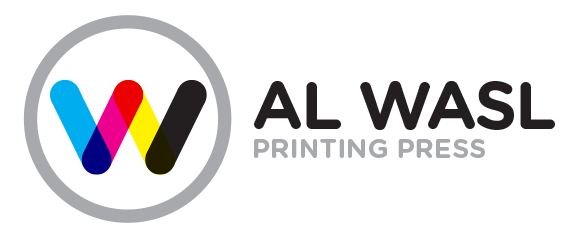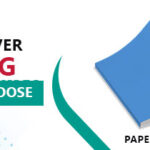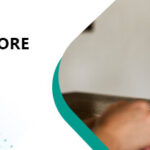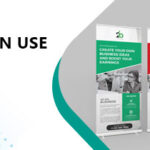Are you planning to print your first book? Printing your first book can feel exciting. However, it might feel a little overwhelming as well. Printing a book needs a lot of hard of writing and editing. If all goes well, then your dream of holding your book in your hands comes true.
Tips to Print Your 1st Book
Do you also want your book to be perfectly printed and looking for guidance? Then you are at the right place. This article is going to be a guide on how to get your first printed book perfectly. Here’s a friendly guide to help you through every important step before you send your book off to the printer.
-
Finalize Your Content and Proofread Thoroughly
Before printing, make sure your book is completely finished. That means:
- Every chapter is written properly, and nothing remains incomplete.
- All the contents are arranged in the right order.
- Grammar, spelling, and punctuation are checked.
- No repeated content or empty pages.
- The layout is neat and consistent.
Even small mistakes can spoil the reading experience. You might feel tempted to skip proofreading, but don’t. A clean, polished book feels professional.
Helpful tips:
- Use online tools like Grammarly for basic errors.
- Read your manuscript aloud, it helps catch awkward sentences.
- Ask a friend or hire a professional editor to review it.
You’ll thank yourself later when readers enjoy your work without distractions.
-
Decide the Type of Book You Want to Print
Different books come in different styles. The look that it brings is very important. so, choose wisely the look that you want your book to reflect. Choose the type that fits your story and audience. Here are a few things that you need to think about-
Binding type:
- Paperback
It is most common and more affordable.
- Hardcover
It feels premium and long-lasting.
Book size:
Some of the popular options include-
- 5″x8.5″
- 6″x9″
- A5
A smaller size is easier to carry. Meanwhile, a larger size suits manuals or art books.
Color or black & white:
- Color printing is great for kids’ books, cookbooks, or photo-heavy pages.
- Black & white is perfect for novels, poetry, or educational content.
Cover style:
Choose between the following-
- Matte
Choose matte if you want a soft and subtle look.
- Glossy
If you want a shiny and bright look, then go for a glossy one.
Your choices should match your readers’ expectations and the purpose of your book.
-
Right Paper Quality
Paper may seem simple, but it affects how your book feels and looks. You need to choose the right type of paper based on the type of book. Here is some easy guidance-
- Novels or text-based books-
Use 70–80 GSM uncoated paper- These papers are light, easy to read, and budget-friendly.
- Photo-heavy or colorful book-
Go for 100–170 GSM coated paper- These pages are available in glossy, which makes them perfect for printing vibrant images. However, if you want a soft finish, then you can go for the matte ones.
Ask the printer to show you your paper samples so you can feel and see the difference.
-
Formatting & Layout Essentials
Your book needs to look neat and professional when printed.
Check these formatting basics:
- Margins
Make sure there’s enough space around the edges, so text doesn’t get cut off.
- Bleed
This is extra space for images or backgrounds that go to the edge of the page.
- Font & spacing
Use a clean, readable font and enough line spacing.
- Image quality:
Photos or illustrations must be 300 DPI to print clearly.
- File format
Save your file as a PDF with all fonts embedded.
If you’re unsure about design and formatting, many printers offer pre-press services. They can set up your book for you.
-
Decide on the Print Quantity
At first, you need to decide how many copies you want to print. It depends on your goals and budget. this might be a little bit confusing. So, here’s a simple breakdown:
- Short runs (25–200 copies):
It is good for launches, gifts, or for distributing at local events.
Use digital printing for faster turnaround and flexibility.
- Large orders (500+ copies):
It is ideal for selling nationwide or launching your book.
Offset printing offers a lower cost per copy for large quantities. This makes it budget-friendly.
Still unsure? Start small. You can always reprint more later. If your book gets a great response, you can print for large orders.
-
Set a Realistic Budget and Timeline
Printing costs can vary based on multiple factors. Some of them are page count, paper type, color, cover, quantity, and binding. Hence, you need to plan ahead.
Plan your budget by:
- Asking for quotes from at least 2–3 printers.
- Checking what’s included: GST, delivery, cover design, etc.
- Asking for sample prints, if possible.
- Adding extra days for printing delays or changes.
Average printing time: 5 to 15 working days, depending on how complex your book is.
-
Printing Company
Picking the right printer is very important. The right printing company will ensure quality and assurance. A good printing company like Al Wasl will guide you, offer options, and deliver quality.
Look for:
- Experience in printing books (not just flyers or posters).
- Range of paper and binding options.
- Willingness to handle custom requests (special cover finishes, ribbons, embossing, etc.).
- Sample books or proofs before final print.
- Friendly support and clear communication.
- Look for positive online reviews.
- Ask other authors for recommendations.
Concluding Thoughts
Printing your first book is a big achievement. So, don’t rush the process. Most people rush and make small mistakes. Take all your time and start enjoying the process. Each step matters, from editing and cover design to paper quality and print quantity.
A well-printed book does more than just reflect your hard work. It also helps the author to connect better with their readers. There are many professionals out there to support you.
Once you’re done, don’t forget to celebrate. Follow this article and get one step closer to printing your first book.






